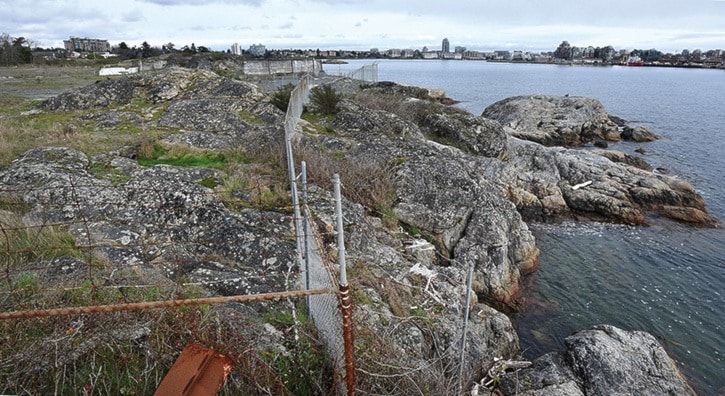McLoughlin and Clover points found their way to the top of the list when it comes to potential sewage treatment plants for the Capital Regional District.
On Wednesday the CRD board approved a recommendation from the core area liquid waste management committee for a plan that would have a secondary or advanced level treatment plant at both sites. The board is also making provision for a West Shore option to accommodate future growth and identified Hartland landfill as a biosolids processing site.
The goal remains to have a plan in place to put forward to senior levels of government by March 31, a deadline that had already been extended by a year by Public Private Partnerships Canada, one of three federal funding agencies for the project.
While the committee recommendation, approved in a 9-6 vote, appeared to ease the concerns of many around the committee table, Langford Coun. Denise Blackwell had serious concerns about the future.
“I think in the interests of the West Shore communities, we need to keep working on a West Shore option just so we have all our bases covered if this thing falls apart,” she said, noting that topic was brought up at the westside wastewater select committee meeting Tuesday.
Such research efforts will take place in parallel to work being done by CRD staff to gain more definitive costing for the main CRD plan, she added.
Clearly frustrated after the meeting, Blackwell said the region had an approved, cost-effective plan in place two years ago for McLoughlin Point, “and then the ministry allowed a single municipality with only like six per cent of the flow to derail it. Now we have to go out and there’s two municipalities that have the ability to derail whatever we worked on this morning.”
Committee members met earlier Wednesday with B.C. Minister of Community Sport and Cultural Development, Peter Fassbender, and Environment Minister Mary Polak to bring them up to speed on the progress on the project.
The ministers committed to helping facilitate a cost-effective final plan, but reiterated that they would not interfere in the democratic process should either Victoria or Esquimalt council reject a rezoning application for the respective properties.
During discussions, both Blackwell and Langford Coun. Lanny Seaton took issue with the cost of piping biosolids to and from Hartland, a conveyancing connection that adds an estimated $48 million to the price tag of the project.
Victoria Coun. Ben Isitt earlier suggested that electric trucks could transport the biosolids with no increase in greenhouse gases.
Recalling her experience during the previous project for a one-plant secondary treatment system at McLoughlin, Blackwell questioned the need to go to tertiary level.
She pointed out that the “advanced oxidation” process being considered provided effluent of almost tertiary quality, without the $100 million cost of tertiary infrastructure.
The second part of the recommendation invites the submission of project concepts from the private sector, as a way to investigate if more financially feasible options, or better technology could be applied in carrying out the overall plan.
View Royal Mayor David Screech said during discussions that he didn’t believe the recommendation locks the committee in to one set of options, but keeps the options open. “We need to send a signal to the province that we’re moving forward on it,” he said.
editor@goldstreamgazette.com
